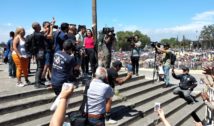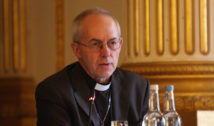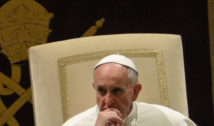
What Factor Did Faith Bring During The Women’s Suffrage Movement?
- By Alison Lesley --
- 08 Jun 2019 --

Catholics, Methodists, and Presbyterians were divided
One hundred years ago this week, Congress passed the 19th constitutional Amendment that gave American women the right to vote.[/tweetit] Although the world was gearing up towards the first world war, the bill was eventually ratified in 1920.
What Factor Did Faith Bring During The Women’s Suffrage Movement?[/tweetthis]
Unfortunately, for the women who lobbied for the Amendment since its inception in 1878, including Elizabeth Cady Stanton, and Susan B. Anthony did not live to witness its passing.
For both sides of the divide (For those who were for and those against the Amendment) faith played a critical role. Religious convictions saw many fights for and many other fights against women’s suffrage.
It was an intense battle that saw women from all walks of life and religious practice spectrums (women active in the holiness movements and Quakers) come together to fight for social reforms since they deemed this to be a pursuit of holiness.
Women such as Lucretia Mott and many others came from the abolitionist movement to champion women’s suffrage since they deemed it to be a matter of human rights as well as divine justice.
More women were of the view that voting was beyond politics and brought in a moral component. Give it to the patriarchy that time that saw religious men cut in the middle for and against the suffrage issue.
Clergymen took opposing sides using biblical arguments to support their reasoning.
All denominations in that time including; Catholics, Methodists, and Presbyterians were divided on the issue, and not one faith backed either side (yes or no for women’s voting) as a unit.
As for the Jewish community, the suffrage was also seen as a divisive issue since the clergy too couldn’t agree. Rabbi Stephen S. Wise took it upon himself to tour the country fighting for women’s right to vote.
The New York City’s Free Synagogue was among the founding members of the Men’s League for Women’s Suffrage. He cut a 45 record that was in support of the women’s suffrage. However, on the counter was Rabbi Joseph Silverman, who hailed from the Emanu-El synagogue in Manhattan. He, on the other hand, did not support women’s right to vote and fought Rabbi Wise for years on the pulpit.
Anna Howard Shaw, who was both a physician and a minister, was an icon of the suffrage movement. She was elected as president of the National American Woman Suffrage Association, and she steered the organization from 1904 to 1915. Unfortunately, she too passed on in 1919 before the Amendment was ratified.
Women began fighting for equal voting rights after fighting many battles in the home front, including; being unable to protect their children, suffering through their husbands’ drinking ways that often led to abuse.
Voting became a way of acquiring the power to steer their own lives and also do good at the same time. Wives and mothers needed to vote as this wasn’t only a good Christian’s duty, but also a way of protecting their families.
Those that opposed the suffrage used faith to bash the movement. They often held rallies stating that if women were given the right to vote the moral health of the nation would be in danger. They used arguments based on biblical texts to accuse suffragists of being immoral and likened their fight to Eve’s subservience to Adam. All in all, both sides used faith to back up their reasoning.
There are many other examples of women and men who fought for and against the right to vote. Many passed on without having witnessed the Amendment and enjoying the simple pleasures that many women take for granted today, who are empowered thanks to the women who fought hard.



















